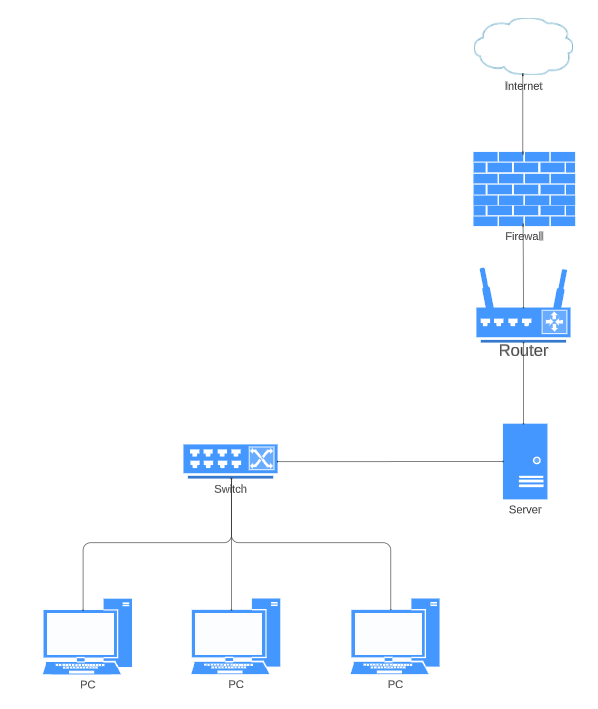Router
Router
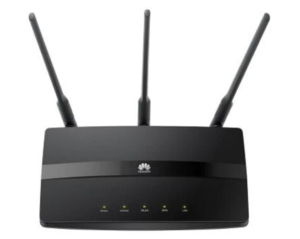
Most home routers are actually multiple devices combined into one – a router, firewall, switch & Wireless Access Point
A router is a device that intelligently forwards packets from network to another. The backbone of the Internet is made up of multiple networks of different types and therefore routers are used to forward the packets to their destination.
Gateway
A gateway is a device that functions as the entry/exit point for data travelling between dissimilar networks, and in particular between local area networks(such as your home network) and the Internet.
- Gateways are always routers, because they pass data between networks.
- Routers are not always gateways because the two networks might not be dissimilar (for instances two routers on the internet passing along traffic to the next hop)
Server
Server

Servers can be a single standalone device like this Lenovo server, or they can be stacked up on ‘server racks’ inside of large data centres.
Servers are specific purpose computers design to provide services to other devices on the network (or to handle requests from other networks). There are lots of different types of server and one computer can provide multiple server services.
Examples of Servers Include:
File Server
This server stores user’s files and folders so that they can be accessed from any device on the network. Can also be used to perform backup functions if a separate back-up is not used.
Web Server
A web server performs the function a web host, providing web page access to other clients across the internet. When you load up a page from the internet the web pages, images, etc that are display on your web browser are provided by a web server.
Proxy Server
A proxy server is a server that acts as a middle man, forwarding packets from one computer to another. A proxy server can provide anonymity for web users(the originator’s IP address is replaced with the proxy server’s IP. They can also provide Internet filter for businesses and schools because only packets from authorised websites (known as white-listed sites) will be forwarded.
Authentication Server
**Not specifically mentioned on the 9608 specification **
An authentication server is a server that holds username, password and user access level (UAL) information. When you log on to a network the authentication server decides whether to authorise your logon request.
Switch
Switch
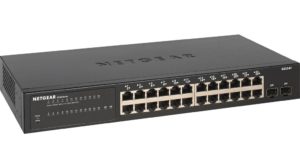
This ethernet switch allows up the connection of up to 24 devices
Switches are devices within a network that forward packets within the network itself. They allow multiple computers to connect to a network through a single node and therefore reduce the wiring requirement. This is especially important in larger networks.
Switches operate at the Data Link Layer and forward data using MAC addresses, rather than IP addresses.
Hubs
Prior to switches networks used hubs instead. They looked pretty much the same and did the same job but they were very inefficient as they create a lot of unnecessary traffic. When a hub received data on a port it just transmitted the data to all other ports instead of just sending the data to the intended recipient.
NIC
Network Interface Card
Devices that connect to a network require a network interface controller to do so. These can be wired or wireless. Each NIC is issued with a unique MAC address when it is manufactured and it always stays the same, regardless of the network that it is connected to.
Ethernet NIC
Ethernet is the industry standard network hardware used to connect wired devices to networks. Ethernet network cards are found in many business laptops and almost all desktop computer
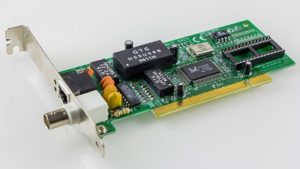
Ethernet cards are a common component in almost all desktop computers

Ethernet Cables are used to connect different ethernet devices together.
Wireless NIC (Wifi / Bluetooth)
In order for a device to connect wirelessly to a network it must use a wireless network interface card. The industry standard is through the use of a WiFi NIC, though it is also possible to connect using Bluetooth to some networks.
Most modern portable devices such as mobile phones, tablets and laptops contain a built-in wireless NIC.
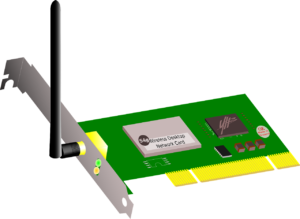
Desktop computers don’t always come with a built-in wifi NIC so you might need to install one.
Bridge
Bridge
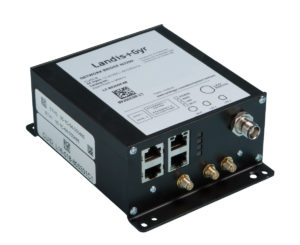
Network Bridge
Larger networks are often broken down into smaller networks for performance reasons. Each of these network segments are connected together through the use of a network bridge.
Repeater
Repeater
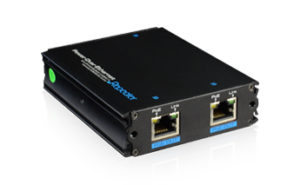
An Ethernet repeater
If a LAN spans a long distance ( > 100m ) then transmitting the data along an ethernet cable will result in significant interference and therefore a reduction in network throughput. In order to deal with this issue network repeaters are used to boost the incoming signal before sending it on to the next ethernet cable.
